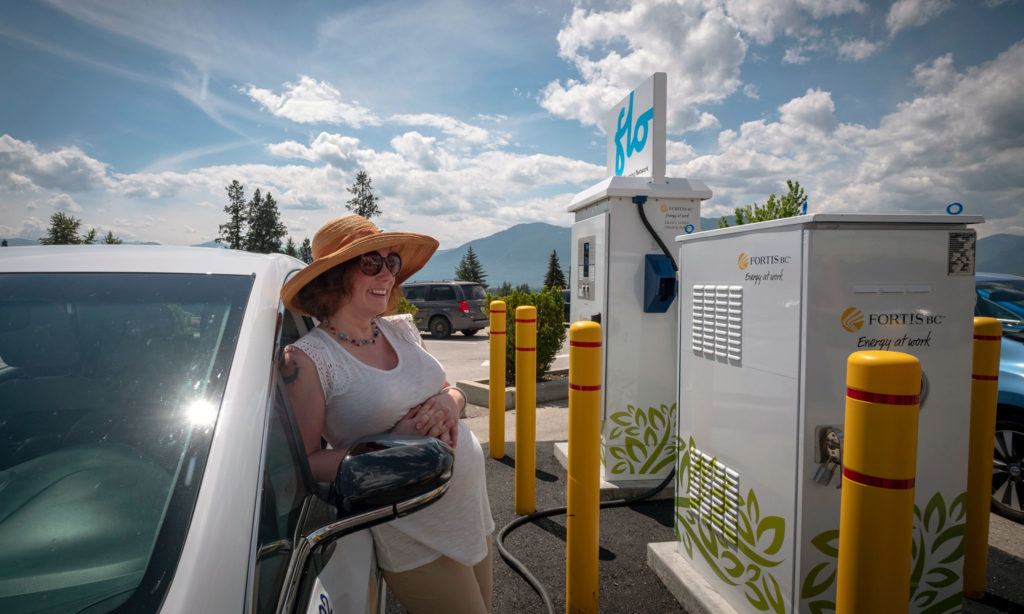It’s up to Canada to decide whether it will be in the EV driver’s seat or sitting in the back.
With the federal budget around the corner, the wishlist for policies that support climate action is high. On that list is getting electric vehicles rolling.
Canada has made strong commitments: to reach 10 per cent zero-emission vehicle sales by 2025, 30 per cent by 2030 and 100 per cent by 2040. But there’s a long way to go. Just 2.5 per cent of total vehicle sales last year were for electrics. Canada has fewer EVs on the road than smaller countries such as Norway, Belgium and the Netherlands.
What’s the holdup?
Canadians like EVs, but high costs and limited availability create barriers to ownership. Clean Energy Canada surveyed British Columbia auto dealerships last year and found only 40 per cent had an electric vehicle on the premises. Long wait times are discouraging sales.
What can we do to accelerate EV uptake?
The federal government needs to introduce a national zero-emission vehicle standard that sets mandatory sales targets and consumer incentive programs to make EVs more affordable and available. Currently, federal and provincial government policies — and the auto industry’s response — are not keeping pace with demand.
Despite the challenges, the future of EVs is looking brighter every day. More and less expensive options are coming online, ranges are increasing and winter performance is improving. The Chevy Bolt, Tesla Model 3 and the newest Nissan Leaf achieved 50 to 100 per cent more range in 2018 than in previous years. The Model 3 now comes in at under $50,000. Incentives in B.C. and Quebec, not to mention gas savings, lower the cost further.
EVs remain unaffordable to many — even with consumer rebates — but prices are dropping. Upfront costs, without subsidies, are predicted to make EVs competitive with gas-powered cars by 2024. As battery prices drop, so will car costs. By 2040, 55 per cent of all new car sales and 33 per cent of the global fleet are projected to be electric, according to Bloomberg’s EV forecast. How many of these EV sales will happen in Canada depends on the strength of our policies.
As with other aspects of our economy, industry will decide on the best way to play by the rules, but government needs to set those rules.
What’s preventing government from implementing EV-friendly policies?
For one, industry doesn’t like imposed ZEV standards. When Quebec introduced its regulations, the auto lobby went on an offence to water down the standards. But the standards are designed to act as a counterbalance to market forces that make selling and repairing internal combustion engine cars more profitable for automakers than selling electrics. As with other aspects of our economy, industry will decide on the best way to play by the rules, but government needs to set those rules.
Zero-emission vehicles standards are popular because they work. They drive innovation, provide more consumer choice, increase EV sales, lower carbon pollution and can be designed to be cost-effective. Quebec’s ZEV standard requires automakers to sell an increasing percentage of electric cars or, starting in 2020, face a financial penalty. In B.C., every new vehicle sold will be zero-emission by 2040. As B.C. designs its ZEV standard, it can learn from Quebec and early North American adopter California by introducing a simplified mandate without loopholes that weaken sales goals.
A zero-emission vehicle standard is not the best or only climate policy. Personal vehicles, even electric ones, will never be the most sustainable climate option, and they are not an answer to congestion woes. But where transit and other shared or active transportation options are unavailable, personal vehicles remain a necessity. With almost one-quarter of Canada’s emissions coming from the transportation sector, EVs have a role to play in reducing carbon pollution.
Plus, a national EV strategy presents a unique opportunity for Canada. Many Canadian communities have electricity sources that are relatively low-carbon, positioning us well to lead EV growth. We have seven of the top 10 best locations in North America to reduce carbon pollution by driving an electric vehicle. Even if you live in Alberta — which gets two-thirds of its electricity from coal — switching from a conventional vehicle to electric would cut your carbon pollution by an average of 25 per cent over the car’s life.
Although we can expect to see fossil fuel-driven cars on our roads for decades, their dominance is coming to an end. Now it’s up to Canada to decide whether it will be in the EV driver’s seat or sitting in the back.
This op-ed was originally published in the Ottawa Citizen.
Our work
Always grounded in sound evidence, the David Suzuki Foundation empowers people to take action in their communities on the environmental challenges we collectively face.




